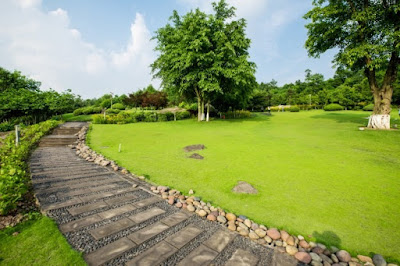Types of Grass and How to Choose The Best Type for Your Lawn
Choosing the best type of grass for your lawn determines how you will take care of it for
the rest of the year. The number one factor in deciding what kind of grass to use is the
location of your home. When you choose the right grass for your area, no extra effort is
needed to make it grow the whole year-round.
the rest of the year. The number one factor in deciding what kind of grass to use is the
location of your home. When you choose the right grass for your area, no extra effort is
needed to make it grow the whole year-round.
Lawn grasses are grouped into two categories - the warm-season grasses and the cool-
season grasses. Home locations, on the other hand, are classified into three zones;
North, South, and Transition Zones.
season grasses. Home locations, on the other hand, are classified into three zones;
North, South, and Transition Zones.
Warm-season grasses are typically planted in the Southern Zone, where there are hot
summers and moderate winters. These types of grasses grow from April to October and
can stand drought and heat. But during the winter months, when the weather is cold,
these grasses may lay dormant and turn brown to turn green again during the warmer
months.
summers and moderate winters. These types of grasses grow from April to October and
can stand drought and heat. But during the winter months, when the weather is cold,
these grasses may lay dormant and turn brown to turn green again during the warmer
months.
Grasses that belong to this group are Bahia grass, Bermuda grass, Buffalo grass,
Centipede grass, St. Augustine, and Zoysia. Many varieties of warm-season grasses
are planted as sprigs or sods, not as seeds. St. Augustine grass, Buffalo grass, and
Centipede grass require medium to low maintenance to create a luscious lawn.
Centipede grass, St. Augustine, and Zoysia. Many varieties of warm-season grasses
are planted as sprigs or sods, not as seeds. St. Augustine grass, Buffalo grass, and
Centipede grass require medium to low maintenance to create a luscious lawn.
Cool-season grasses grow most actively during the spring and fall season. These
kinds of grasses can tolerate extreme temperatures such as below freezing point and
severe hot weather during the summer. Cool-season grasses mostly thrive in the
Northern Zone when temperatures are at 60 to 75 degrees. Grasses may turn brown
when the weather is hottest.
kinds of grasses can tolerate extreme temperatures such as below freezing point and
severe hot weather during the summer. Cool-season grasses mostly thrive in the
Northern Zone when temperatures are at 60 to 75 degrees. Grasses may turn brown
when the weather is hottest.
Annual and perennial Ryegrass, Bentgrass, Fine Fescue, Tall Fescue, and
Kentucky Bluegrass are the types of cool-season grass that you can use in the
Northern Zone where West Michigan belongs. Kentucky Bluegrass is the kind that is
most commonly used in the Northern Zone landscapes. It also grows best in the
Transition Zone.
Kentucky Bluegrass are the types of cool-season grass that you can use in the
Northern Zone where West Michigan belongs. Kentucky Bluegrass is the kind that is
most commonly used in the Northern Zone landscapes. It also grows best in the
Transition Zone.
Transition Zone is the area between the North and South Zones. Planting any grass in
this zone is quite challenging because of the hot summers and cold winters. Warm-
season grasses suffer in the winter while cool-season grasses get damaged by the
summer heat. One type of grass which can tolerate both heat and cold is the Tall
fescue grass, which remains green most of the year. Some landscape designers
recommend seeding the lawn with a mix of cool-season and warm-season grasses for
an all-year-round growth.
this zone is quite challenging because of the hot summers and cold winters. Warm-
season grasses suffer in the winter while cool-season grasses get damaged by the
summer heat. One type of grass which can tolerate both heat and cold is the Tall
fescue grass, which remains green most of the year. Some landscape designers
recommend seeding the lawn with a mix of cool-season and warm-season grasses for
an all-year-round growth.
Planting the appropriate grasses in their specific zones may still have different results
depending on the quality of lawn care. If you want your lawn to look its best, let the
experts handle it. Check out Lawn care Michigan, Lawn care Muskegon, Lawn
care Grand Haven, and Lawn care Whitehall for your professional landscaping
needs in the West Michigan area.
depending on the quality of lawn care. If you want your lawn to look its best, let the
experts handle it. Check out Lawn care Michigan, Lawn care Muskegon, Lawn
care Grand Haven, and Lawn care Whitehall for your professional landscaping
needs in the West Michigan area.
http://bit.ly/preferredlawncafe-contact. Service Areas include Muskegon, Grand
Haven, and Whitehall in the West Michigan vicinity.

.jpeg)

Comments
Post a Comment